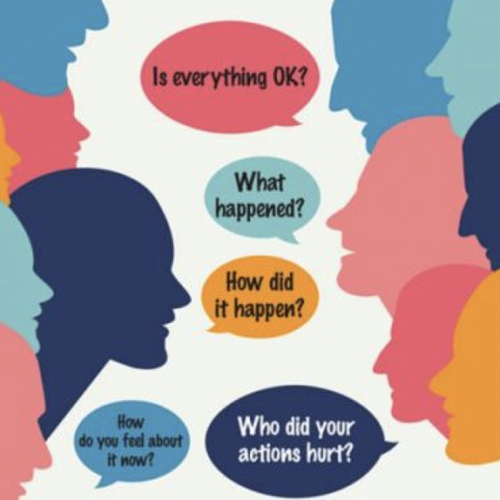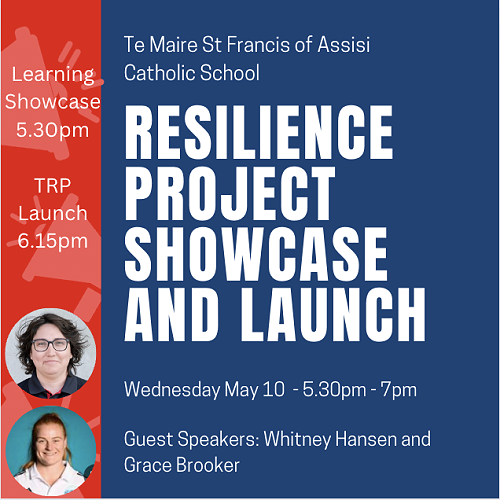Behaviour Management (Restorative Justice)
Conflict
There are a number of ways to identify peer conflict. First, when a conflict occurs, both people involved have equal power in the relationship. And while both people are emotional and upset neither one is seeking power or attention. They just happen to disagree.
Also, when people experience conflict they likely will feel remorse and take responsibility for what they did wrong. They just want to solve the problem so that they can start having fun again. Lastly, conflict happens occasionally and is usually not serious or emotionally damaging to either person.
Bullying
There are a number of ways that children can be hurtful to one another but not all of it is bullying. Sometimes it is simply unkind behaviour. The best way to identify bullying is to realise that it is a deliberate act with the intention to hurt, insult or threaten another person.
There’s also an imbalance of power in the situation. Bullies usually exert control over other people either by intimidating them, insulting them or threatening them. Bullying also is repeated and purposeful and poses a threat of serious emotional or physical harm.
Typically, when bullying occurs, there is very little emotional reaction from the bully but the target is usually visibly upset. Additionally, bullies may even get satisfaction from hurting people because it gains attention.
Lastly, there is usually no remorse from the bully and no attempt to resolve anything. Bullies are not interested in having a relationship with the intended target.
How do we deal with this at our school?
At St Francis of Assisi Catholic School our behaviour management procedures are based around Restorative Justice principles. We manage inappropriate behaviour, based on Gospel values and discipline processes that are just, reasonable, respectful and consistent.
Restorative justice demands that we think about what happens to the victim, and how the victim’s needs might be met. It also requires us to consider the other stakeholders in the event and what their needs might be.
Our Year 7/8 children will be trained as peer mediators and this is the first step (and often the last step) for our children when things go wrong in the playground. Our peer mediators will wear Hi Viz jackets and wander around the playground during the breaks – making themselves available to the children who need help sorting small issues. The mediators facilitate a discussion and usually all parties agree to move forward positively.
Occasionally the children need adult help to restore the relationships that have been broken – in this case the peer mediators would find the duty teacher who would then take over facilitating the discussion.
When a teacher is helping facilitate the discussion we call this a mini-chat. The teacher will ensure that both sides of the story are listened to and will then ask both parties what needs to be done to restore the relationship. If this is a one off, this will possibly be all that needs to happen, the teacher on duty will ensure that the classroom teacher knows there has been a chat.
The Restorative Chat:
Teachers and students engage in restorative conversations both as prevention and as an early intervention for relatively low-level classroom or playground disruption. This approach models calm, respectful dialogue and makes use of established language such as :
- What is happening?
- What were you thinking?
- Who do you think is being affected?
- How do you think they are affected?
- What do you need to put it right?
If, in order to restore the relationship, a consequence is required, this will be negotiated by all of the stakeholders and will be appropriate to the harm done and the needs of the children concerned.
If the problem is recurring parents will be informed and involved so that they can support us from home.
We encourage students to take responsibility for their own behaviour by making appropriate choices and learning from their mistakes and reconciliation is the aim of all conflict resolution.
Consequences
Sometimes it is also appropriate to give children consequences for their behaviour. For example when children become physical towards each other there is always a consequence.
An example:
- the student/ students might be taken out of the playground or Hub for a length of time - appropriate to the incident and the age of the student.
We try to make the consequence appropriate to the incident and we always try to respect the privacy of both sets of students. this will mean we don't advertise to everyone what the consequence will be - but there will be one.
Why use Restorative Practices at St Francis of Assisi Catholic School?
- Restorative Justice is based on gospel values and has reconciliation at its core.
- It creates better relationships with young people and teaches our young people the importance of restoring relationships.
- It promotes greater engagement in learning
- It creates greater development of important social and emotional competence in learners.








